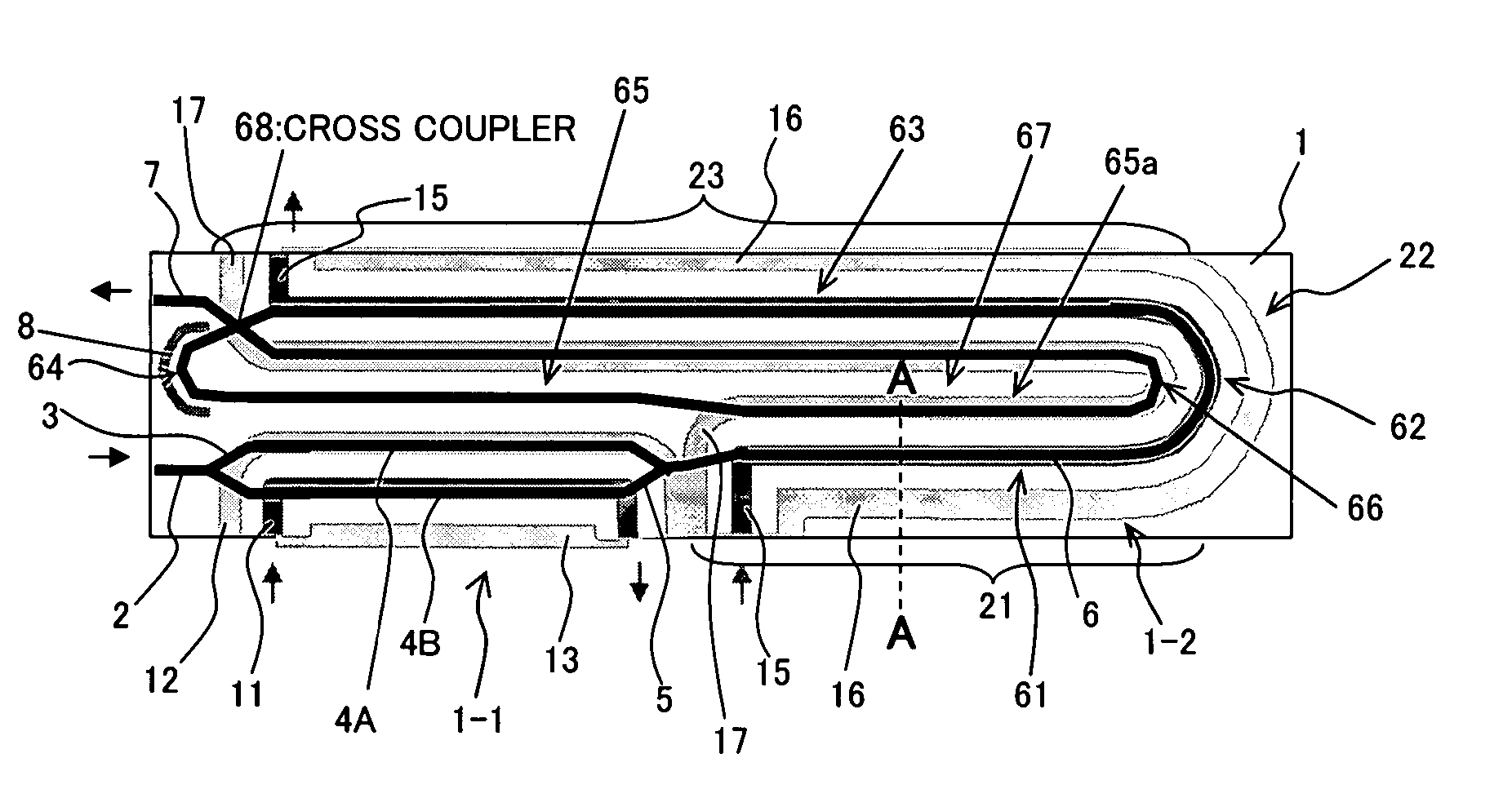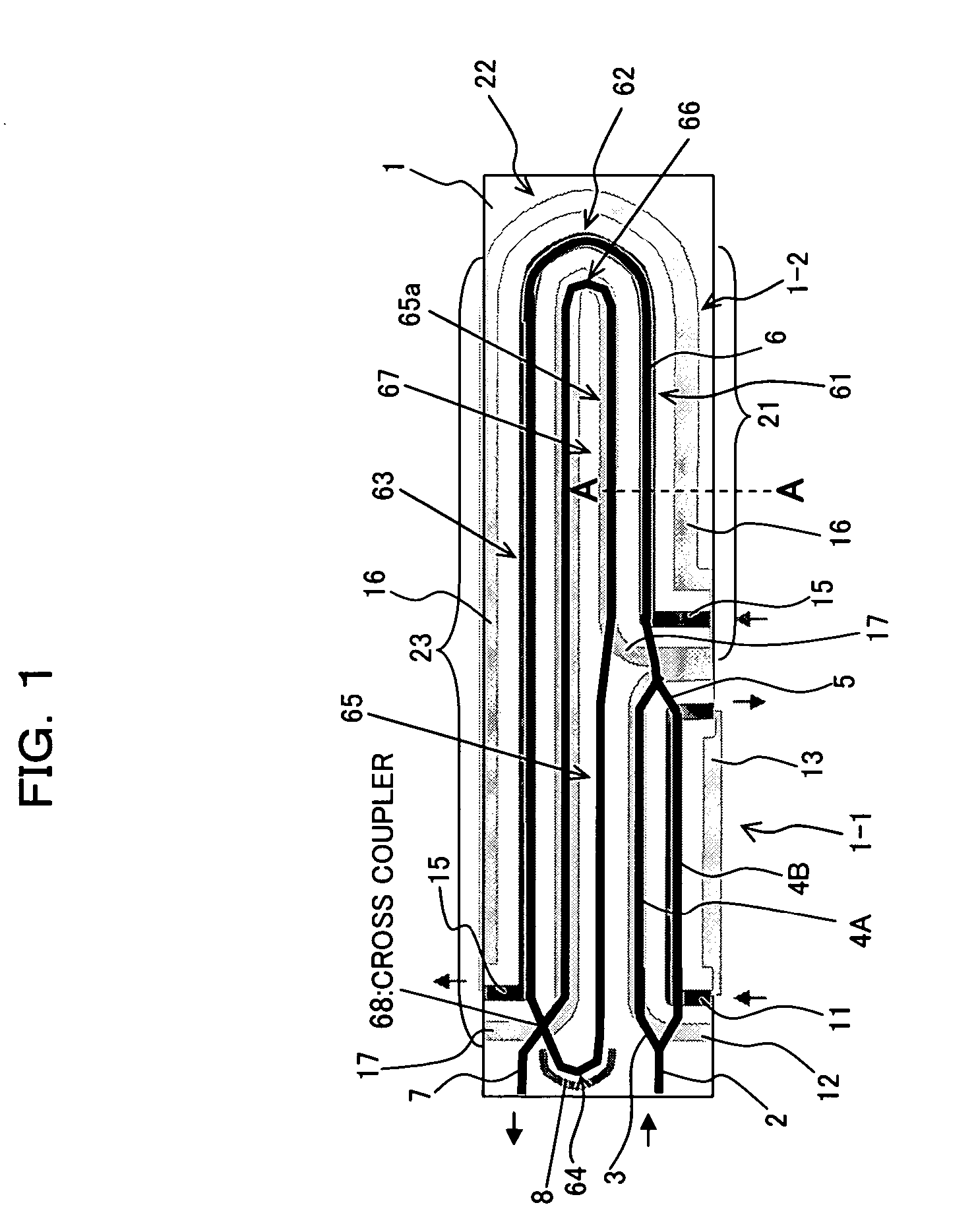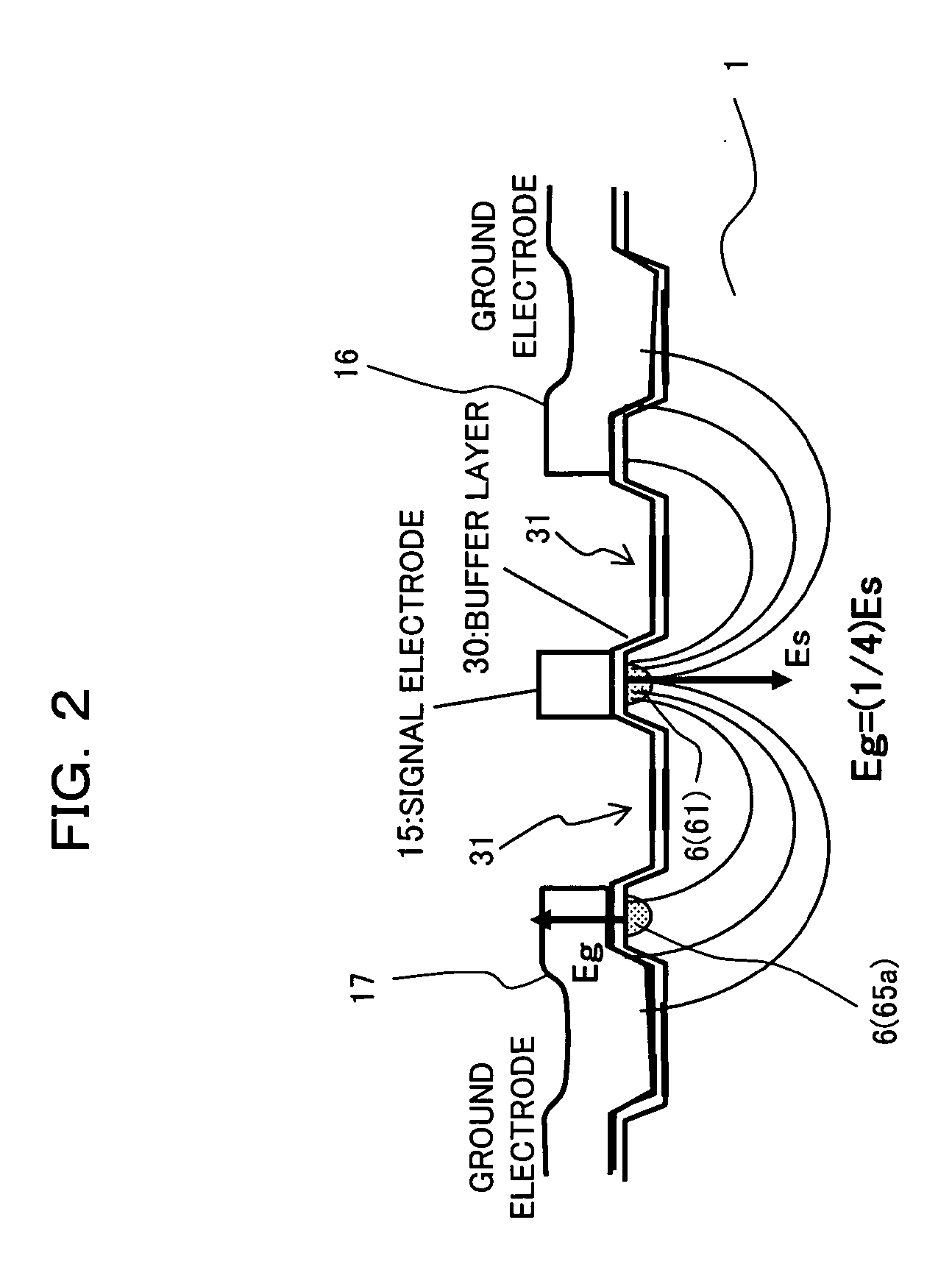Optical device
a technology of optical devices and optical light guides, applied in the field of optical devices, can solve the problems of limiting the number of wavelengths and imposing limits on the increase of interaction length, and achieve the effects of narrowing the pulse width, increasing the modulation index, and increasing the output wavelengths
- Summary
- Abstract
- Description
- Claims
- Application Information
AI Technical Summary
Benefits of technology
Problems solved by technology
Method used
Image
Examples
first embodiment
[0048] [A] Description of First Embodiment
[0049]FIG. 1 is a schematic plan view showing the configuration of an optical modulator (an optical frequency comb generator) serving as an optical device according to a first embodiment of the present invention. FIG. 2 is a schematic cross-sectional view showing a cross sectional profile taken along A-A shown in FIG. 1 in conjunction with electric lines of force of an applied electric field. As shown in FIG. 1, the optical frequency comb generator of the present embodiment comprises a first optical modulator (an intensity modulator) 1-1 having a waveguide structure and a second optical modulator (a phase modulator) 1-2 connected in series with the intensity modulator 1-1, both of which are formed (integrated) on a substrate 1 exhibiting an electro-optical effect; e.g., an LN crystal or an LT crystal. The optical frequency comb generator can be applied as a multiwavelength light source (see FIG. 9), or as a pulse light source by addition of ...
second embodiment
[0107] [B] Description of a Second Embodiment
[0108]FIG. 6 is a schematic plan view showing the configuration of an optical modulator (a phase modulator) serving as an optical device according to a second embodiment of the present invention. In the phase modulator shown in FIG. 6, two parallel or essentially-parallel phase modulation waveguides (parallel waveguides) 6A, 6B are patterned on the substrate 1 having an electro-optical effect, such as an LN crystal or an LT crystal. The signal electrode (hot electrode) 15 is patterned on one (6B) of the parallel waveguides 6A, 6B. The earth electrodes (ground electrodes) 16, 17 parallel to the signal electrode 15 are patterned such that the signal electrode 15 is sandwiched therebetween. At this time, the earth electrode (ground electrode) 17 is patterned on the remaining one (6A) of the parallel waveguides 6A, 6B.
[0109] As a result, the signal electrode 15 which is arranged to partially overlap one (6B) of the parallel waveguides 6A, 6B...
PUM
| Property | Measurement | Unit |
|---|---|---|
| frequency | aaaaa | aaaaa |
| width | aaaaa | aaaaa |
| thickness | aaaaa | aaaaa |
Abstract
Description
Claims
Application Information
 Login to View More
Login to View More - R&D
- Intellectual Property
- Life Sciences
- Materials
- Tech Scout
- Unparalleled Data Quality
- Higher Quality Content
- 60% Fewer Hallucinations
Browse by: Latest US Patents, China's latest patents, Technical Efficacy Thesaurus, Application Domain, Technology Topic, Popular Technical Reports.
© 2025 PatSnap. All rights reserved.Legal|Privacy policy|Modern Slavery Act Transparency Statement|Sitemap|About US| Contact US: help@patsnap.com



